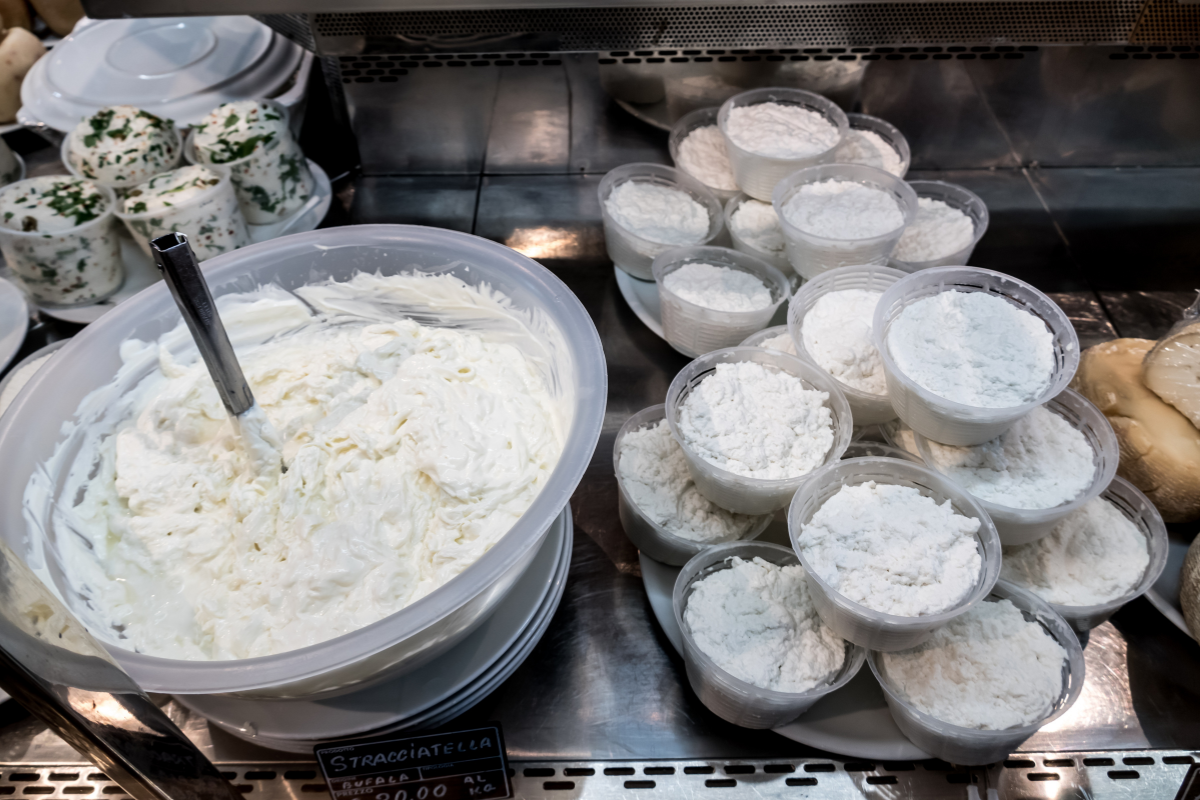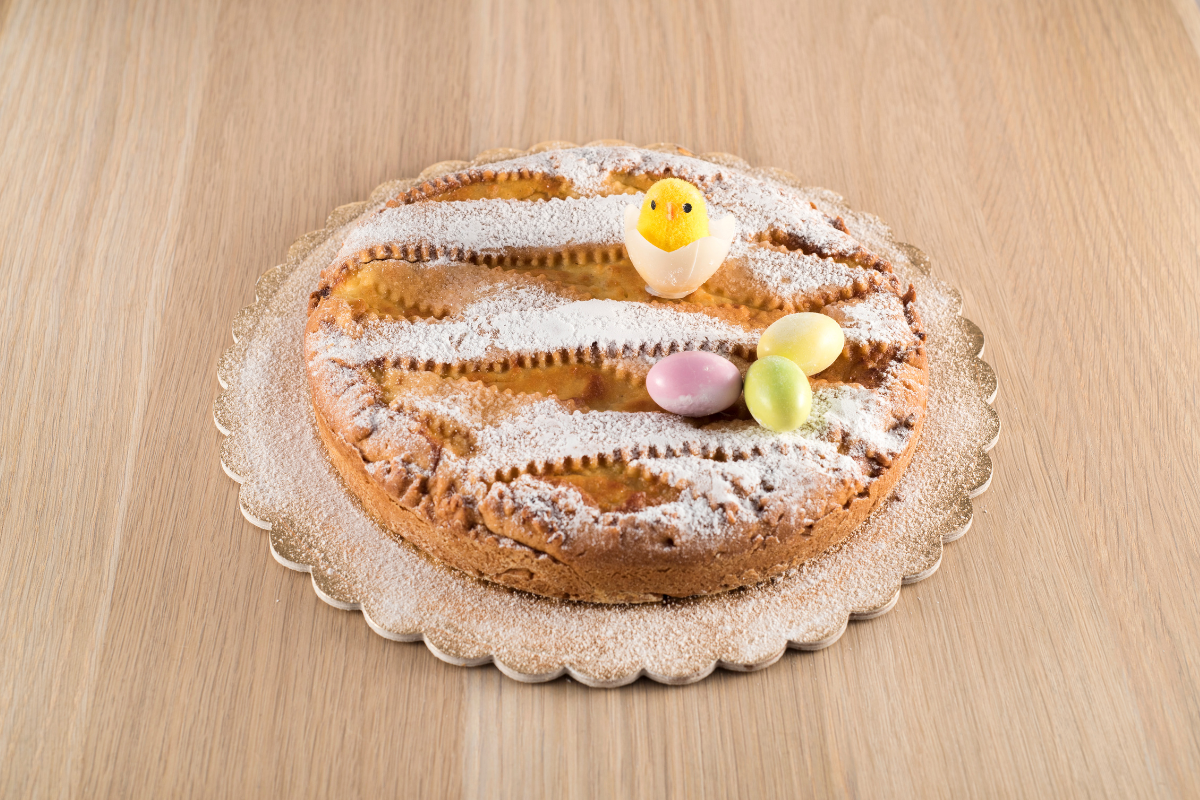Introduction to Ricotta Cheese Dessert Recipes
Exploring Ricotta’s Versatility and Appeal in Desserts
Ricotta cheese, renowned for its creamy texture and subtle sweetness, is a transformative ingredient in dessert recipes. This versatile cheese enhances a variety of sweet dishes, providing a unique balance of richness and lightness. Whether paired with zesty citrus or rich chocolate, ricotta cheese is a favored component in desserts. Both chefs and home cooks value ricotta for its distinctive, mildly sweet touch, frequently using it in creations like cheesecakes and mousses, thereby exploring the full potential of ricotta cheese dessert recipes.
The Rich History of Ricotta in Culinary Traditions
Ricotta cheese has a rich history, originating from Italy’s culinary traditions. Its name, meaning ‘recooked,’ refers to its production method where whey from cheese-making is reheated. This process symbolizes resourcefulness, turning a byproduct into a delicious cheese. In Italy, ricotta is a key ingredient in many desserts, including cheesecakes and cannoli. Its journey from a simple farmer’s cheese to an international kitchen staple illustrates ricotta’s enduring appeal and versatility in dessert making.
Selecting the Right Ricotta
Tips for Choosing the Best Ricotta for Desserts
When selecting ricotta for your desserts, aim for freshness and minimal processing to ensure the best flavor and texture. Fresh ricotta, often found in specialty stores or Italian markets, should have a creamy consistency and a mild, slightly sweet taste. Avoid brands with additives or preservatives, as they can alter the cheese’s natural flavor. For desserts, whole milk ricotta is preferable for its rich taste and smooth texture. Always check the expiration date and look for ricotta that has a clean, white appearance without any yellowing or excess liquid.
Understanding the Difference Between Fresh and Store-Bought Ricotta
Fresh ricotta and store-bought varieties can vary significantly in taste and texture. Fresh ricotta is typically lighter and creamier, making it ideal for desserts where the cheese’s flavor is a highlight. It has a delicate sweetness and a fine, grainy texture that blends well into recipes. On the other hand, store-bought ricotta, especially those not labeled as “whole milk,” might be denser and contain stabilizers or thickeners, which can affect your dessert’s outcome. While convenient, these versions may not provide the same freshness and quality as their freshly made counterparts. When using store-bought ricotta, consider straining it to remove excess liquid and achieve a consistency closer to that of fresh ricotta.

Classic Ricotta Cheese Dessert Recipes
Traditional Cannoli Recipe
Ingredients:
- 15 oz ricotta cheese, strained
- 1/2 cup powdered sugar
- 1/4 cup mini chocolate chips
- 1/2 teaspoon vanilla extract
- Zest of 1 orange
- Cannoli shells
- Chopped pistachios for garnish
- Additional powdered sugar for dusting
Instructions:
- Filling Preparation: In a mixing bowl, combine the strained ricotta cheese and powdered sugar until smooth. Stir in the vanilla extract and orange zest.
- Add Chocolate: Fold in the mini chocolate chips gently to distribute them evenly throughout the mixture.
- Fill Cannoli: Spoon the ricotta mixture into a piping bag without a tip or use a spoon to fill the cannoli shells from both ends.
- Garnish: Dip the ends of the filled cannoli into chopped pistachios, then dust with powdered sugar before serving.
Ricotta Cheesecake Recipe
Ingredients:
- 2 cups ricotta cheese
- 1 cup granulated sugar
- 3 large eggs
- 1 tablespoon all-purpose flour
- 1 teaspoon vanilla extract
- Zest of 1 lemon
- Crust: 1 1/2 cups graham cracker crumbs, 1/3 cup melted butter, 1/4 cup sugar
Instructions:
- Prepare Crust: Mix graham cracker crumbs, melted butter, and sugar. Press into the bottom of a springform pan and bake at 350°F (175°C) for 10 minutes. Cool.
- Cheesecake Mixture: Blend ricotta cheese and sugar until smooth. Add eggs one at a time, mixing well after each addition. Incorporate flour, vanilla extract, and lemon zest.
- Bake: Pour the mixture over the cooled crust. Bake at 325°F (163°C) for about 1 hour until set and slightly golden. Cool and then refrigerate for at least 4 hours.
- Serve: Once chilled, release the cheesecake from the springform pan, slice, and serve.
These classic recipes highlight the delightful versatility of ricotta in desserts, offering a taste of tradition with every bite.
Step-by-Step Instructions and Ingredient Lists
For Cannoli:
- Mix ricotta with powdered sugar, then add flavorings and chips.
- Fill shells, garnish, and dust with sugar.
For Cheesecake:
- Prepare and bake the crust.
- Mix filling ingredients, pour over the crust, and bake.
- Cool, chill, and serve.
These steps ensure a delightful dessert experience, showcasing ricotta’s creamy texture and mild flavor.
Innovative Ricotta Cheese Desserts
Exploring Creative Ways to Incorporate Ricotta into Modern Desserts
Ricotta cheese is not just for traditional recipes; it’s also a fantastic ingredient for contemporary dessert creations. Its creamy texture and subtle sweetness make it an excellent base for a variety of innovative desserts. Modern chefs and home cooks are finding new ways to showcase ricotta, from airy mousses to rich, creamy ice creams. By blending ricotta with unexpected ingredients like exotic fruits or aromatic spices, you can create desserts that are both sophisticated and delightful. These contemporary recipes offer a fresh take on ricotta, proving that this versatile cheese can adapt to various culinary trends and styles.
Recipes for Ricotta Mousse, Ricotta Ice Cream, and More
Ricotta Mousse:
- Blend 1 cup of ricotta with 1/4 cup of honey or maple syrup.
- Whip 1/2 cup of heavy cream and fold it into the ricotta mixture.
- Add a touch of vanilla extract or citrus zest for extra flavor.
- Chill and serve garnished with fresh berries or a drizzle of chocolate.
Ricotta Ice Cream:
- Puree 2 cups of ricotta with 1 cup of sugar, 1 cup of milk, and 1 tsp of vanilla extract until smooth.
- Chill the mixture, then churn in an ice cream maker according to the manufacturer’s instructions.
- Freeze until firm, then serve with your favorite toppings.
These innovative ricotta desserts expand the boundaries of traditional recipes, offering new and exciting ways to enjoy this beloved cheese in your sweet creations.

Ricotta in Healthy Desserts
Using Ricotta in Low-Carb, Keto, or Gluten-Free Dessert Recipes
Ricotta cheese is a boon for those adhering to low-carb, keto, or gluten-free diets, offering a way to enjoy creamy, satisfying desserts without straying from their eating plans. Its naturally low carbohydrate content and high protein levels make ricotta an ideal ingredient for healthier dessert options. When incorporating ricotta into low-carb or keto recipes, opt for full-fat versions to align with the diet’s macronutrient requirements and enhance the dessert’s richness. For gluten-free recipes, ensure that all accompanying ingredients, like crusts or fillers, are free of gluten-containing grains or additives.
Examples of Healthy Ricotta Dessert Options
Low-Carb Ricotta Cheesecake:
- Create a crust using almond flour and butter, avoiding traditional high-carb ingredients.
- Mix ricotta with eggs, a low-carb sweetener like erythritol, and vanilla for the filling.
- Bake and enjoy a dessert that satisfies cheesecake cravings without the carbs.
Keto Ricotta Pudding:
- Blend ricotta with a keto-friendly sweetener, lemon zest, and vanilla extract for a simple yet delicious pudding.
- Chill and serve with a sprinkle of cinnamon or fresh berries for added flavor without the carbs.
Gluten-Free Ricotta and Berry Parfait:
- Layer ricotta mixed with a touch of honey or agave (in moderation) with fresh berries and gluten-free granola for a delightful parfait.
- This dessert offers a balanced combination of protein, healthy fats, and natural sweetness, perfect for a gluten-free treat.
These healthy ricotta dessert recipes demonstrate that you can maintain dietary preferences while still indulging in delicious and satisfying sweet treats.
Pairing and Serving Suggestions
Best Ways to Serve and Pair Ricotta Desserts
Ricotta desserts are versatile and can be paired with a variety of flavors and textures to enhance their taste. When serving ricotta-based sweets, consider the dessert’s main flavor profiles to select complementary pairings. For instance, a light and airy ricotta mousse pairs beautifully with the acidity of fresh berries, while a denser ricotta cheesecake might benefit from the contrast of a sweet and tangy fruit compote. Temperature also plays a crucial role in serving ricotta desserts; some are best enjoyed chilled, which can enhance their creamy texture, while others, like baked ricotta dishes, can be served warm to highlight their comforting richness.
Ideas for Garnishes and Accompaniments
- Fresh Fruits: The natural sweetness and acidity of fruits like berries, peaches, or figs can complement the creamy richness of ricotta desserts. Consider a fruit compote or a fresh fruit salsa as a topping.
- Nuts and Seeds: Toasted nuts or seeds add a delightful crunch and nutty flavor that pairs well with the smooth texture of ricotta. Try sprinkling toasted almonds, pistachios, or pumpkin seeds on top of your dessert.
- Herbs and Spices: Fresh herbs like mint or basil can add a refreshing note to ricotta desserts, while spices such as cinnamon, nutmeg, or cardamom can introduce warmth and complexity.
- Sauces and Syrups: A drizzle of chocolate sauce, caramel, or a fruit coulis can enhance the flavor profile of your ricotta dessert. For a lighter touch, a simple honey or maple syrup drizzle can also do wonders.
- Edible Flowers: For a visually stunning presentation, consider garnishing your ricotta desserts with edible flowers. They add color, a subtle floral note, and a touch of elegance.
By thoughtfully pairing and garnishing your ricotta desserts, you can elevate the dining experience, making each dish not only a treat for the palate but also a feast for the eyes.

FAQs
Common Questions About Ricotta Dessert Preparation and Storage
What Can I Do with Too Much Ricotta? If you find yourself with an excess of ricotta, there are numerous creative ways to utilize it. Beyond desserts, ricotta can be incorporated into breakfast dishes like pancakes or omelets, used as a filling for pasta such as ravioli or lasagna, or even added to dips and spreads. In terms of desserts, consider making ricotta pancakes, a ricotta pound cake, or blending it into smoothies for a creamy texture.
Can You Freeze Fresh Ricotta? Yes, you can freeze fresh ricotta, although it may affect its texture, making it slightly grainier once thawed. It’s best used in cooked dishes post-freezing. To freeze, place the ricotta in an airtight container and store it for up to two months. Thaw in the refrigerator before using.
Can You Eat Uncooked Ricotta Cheese? Absolutely! Uncooked ricotta is delicious and can be used in various dishes, from spreads to desserts. Ensure it’s fresh and consumed by the use-by date. It’s particularly delightful in cold desserts or as a fresh filling.
Does Ricotta Cheese Melt? Ricotta doesn’t melt like mozzarella or cheddar because it contains more moisture and less fat. When heated, ricotta becomes softer and creamier but doesn’t display the same stretchy, melted consistency as other cheeses. It’s ideal for creating a creamy texture in baked goods and hot dishes.
Tips for Achieving the Perfect Texture and Flavor
- Strain the Ricotta: For smoother desserts, strain the ricotta through a fine-mesh sieve to remove excess whey. This step is crucial for achieving the right consistency, especially in recipes where ricotta is a key ingredient.
- Balance Flavors: Ricotta’s mild taste pairs well with a variety of flavors. Enhance its creaminess with complementary ingredients like fruits, nuts, or honey. Don’t forget a pinch of salt to amplify the cheese’s subtle sweetness.
- Experiment with Sweeteners: Depending on your recipe, different sweeteners can bring out the best in ricotta. While sugar is standard, honey, maple syrup, or alternative sweeteners can offer unique flavor profiles.
- Use Fresh Ricotta: Whenever possible, opt for fresh ricotta to ensure the best flavor and texture in your desserts. Its freshness can significantly impact the overall taste of your dish.
By addressing these FAQs and following the tips provided, you can master the art of working with ricotta in desserts, ensuring delicious results every time.
